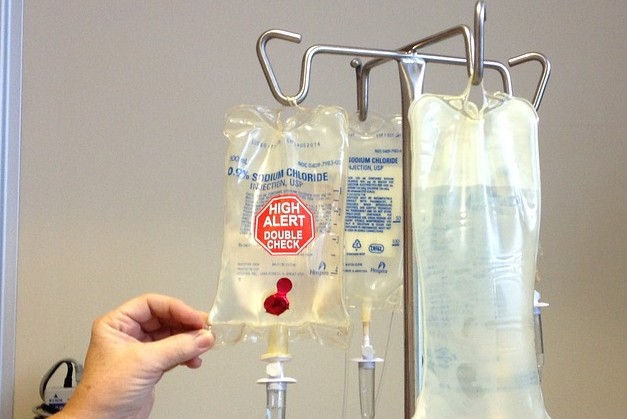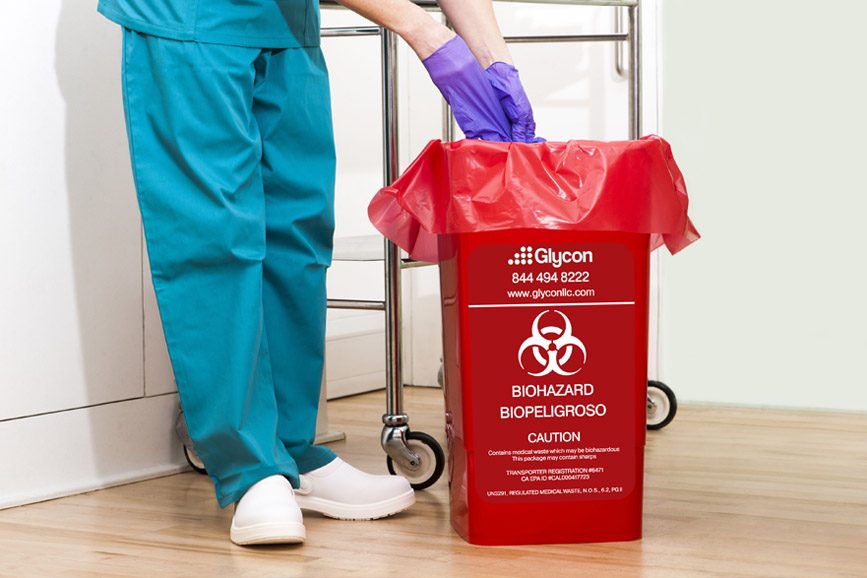Defending Well-Being: Unveiling the Significance of Specialist Medical Waste Removal
Defending Well-Being: Unveiling the Significance of Specialist Medical Waste Removal
Blog Article
The Significance of Appropriate Clinical Garbage Disposal: A Guide for Healthcare Facilities
Proper clinical waste disposal is a vital aspect of healthcare center management, ensuring the safety and health of people, personnel, and the atmosphere. From understanding the different groups of medical waste to following regulative demands, medical care centers have to embrace efficient waste partition methods and choose proper disposal approaches. Nevertheless, the relevance of proper clinical waste disposal exceeds plain compliance; it is a responsibility that requires recurring training and education and learning for personnel. In this guide, we will explore the numerous aspects of medical garbage disposal and highlight the important steps that health care centers need to take. By applying these techniques, health care facilities can mitigate threats, shield public health, and add to a cleaner, more secure atmosphere.
Understanding Clinical Waste Categories
Comprehending clinical waste categories is vital for correct disposal in health care facilities. Clinical waste is a broad term that incorporates different kinds of waste produced in medical care setups, such as centers, medical facilities, and research laboratories. Classifying clinical waste assists guarantee that it is handled, stored, and disposed of securely and in conformity with relevant regulations.
There are several groups of clinical waste that health care facilities require to be knowledgeable about. These classifications consist of transmittable waste, sharps waste, pharmaceutical waste, chemical waste, and radioactive waste (medical waste disposal services with WasteX). Each group has particular characteristics and needs different disposal approaches to lessen the threat of harm to health care workers, clients, and the atmosphere
Transmittable waste, for instance, refers to squander contaminated with possibly contagious products, such as blood, body liquids, and tissues. Drug waste is composed of ended or extra medications, while chemical waste is composed of harmful chemicals made use of in medical treatments.
Compliance With Regulatory Needs
Medical care facilities must guarantee conformity with regulative requirements for correct medical garbage disposal. Regulative bodies, such as the Epa (EPA) and the Occupational Safety And Security and Health And Wellness Management (OSHA), have actually developed regulations and standards to guard public wellness and the setting. These policies outline the proper handling, storage space, transportation, and disposal of clinical waste.
Conformity with regulative needs is vital for medical care facilities to stay clear of legal fines, reputational damage, and prospective injury to human health and the setting. Failure to adhere to these regulations can result in penalties, suits, and even the suspension or abrogation of operating licenses.
To guarantee compliance, healthcare centers must develop extensive waste management programs that consist of team training, appropriate waste partition, and making use of appropriate containers and tags. Regular audits and examinations must also be carried out to recognize any type of non-compliance issues and resolve them quickly.
It is necessary for healthcare facilities to keep up to day with changes in policies and update their waste administration practices accordingly. This can be attained by actively keeping track of updates from regulatory bodies and taking part in training programs and workshops.
Implementing Effective Waste Segregation Practices
To make certain appropriate medical waste disposal, healthcare centers should execute effective waste partition practices. Waste segregation is an essential action in the general waste administration process, as it helps decrease the danger of infection, prevents cross-contamination, and guarantees the risk-free disposal of different sorts of waste. Efficient waste segregation techniques involve dividing medical waste into various groups based on its features and prospective hazards.
One common practice is the partition of sharps waste, such as scalpels and needles, from various other sorts of clinical waste. Sharps waste must be put in puncture-resistant containers to stop injuries and potential infections. In addition, contaminated materials, such as chemicals and drugs, must be divided from general medical waste to avoid environmental contamination.
Appropriate labeling and color-coding of waste containers are vital for effective waste partition. Clear and visible tags need to be placed on each container to indicate the type of waste it has and any kind of unique handling demands - medical waste disposal services with WasteX. Furthermore, color-coding can be made use of to set apart between different waste classifications, making it less complicated for medical care personnel to identify and get rid of of waste properly
Normal training and education for healthcare personnel is essential for the successful application of waste segregation techniques. Personnel participants ought to be informed on the various waste groups, proper partition methods, and the relevance of adhering to waste management methods. This will aid guarantee compliance and uniformity in waste partition techniques throughout the center.
Finding Appropriate Disposal Techniques
Correct selection of appropriate disposal approaches is vital in making certain the risk-free and eco liable management of medical waste in healthcare facilities. Healthcare centers generate a range of clinical waste, consisting of sharps, contagious waste, pharmaceutical waste, and chemical waste - medical waste try this site removal. Each type of waste needs particular disposal methods to lessen the threat of contamination, injury, and ecological harm
One typical disposal approach for medical waste is incineration. Incineration includes the controlled burning of waste at heats. This technique works in destroying microorganisms and decreasing the volume of waste. It can launch dangerous contaminants right into the air if not properly controlled.

Chemical sanitation is another approach made use of for sure kinds of medical waste, such as pharmaceutical waste. This approach utilizes chemicals to neutralize or destroy contaminants. It is essential to pick chemicals that are risk-free and environmentally pleasant.
In many cases, garbage dump disposal may appropriate for non-hazardous clinical waste (medical waste disposal services with WasteX). Nonetheless, appropriate segregation and packaging are essential to avoid leakage or contamination.
Inevitably, medical care centers must thoroughly examine the qualities of their medical waste and select proper disposal approaches that focus on safety and security, environmental defense, and governing i loved this compliance. Regular training and surveillance are crucial to ensure that health care personnel adheres to proper disposal procedures.

Training and Educating Team on Correct Disposal Treatments
Personnel education and learning and training play a vital function in ensuring the proper disposal of medical waste in healthcare centers. It is important that all personnel, consisting of physicians, registered nurses, service technicians, and support personnel, receive extensive training on correct disposal procedures. This training must cover the various kinds of medical waste, their prospective threats, and the proper approaches for managing, segregating, and throwing away them.
One of the primary objectives of staff education and learning and training is to make certain that all healthcare specialists comprehend the significance of appropriate disposal treatments and the potential repercussions of incorrect waste administration. They require to be aware of the risks connected with clinical waste, such as the transmission of infections and the contamination of the setting. medical waste removal near me. By comprehending these threats, staff members will certainly be a lot more inspired to adhere to proper disposal protocols and take the necessary safety measures to safeguard themselves, their associates, and blog here the area
Educating should additionally cover making use of individual protective devices (PPE) and the appropriate strategies for handling clinical waste. Employee should be enlightened on how to determine and set apart different sorts of waste, such as sharps, infectious waste, and hazardous chemicals. They must likewise be educated on the appropriate usage of waste containers, such as sharps containers and biohazard bags, along with the relevance of labeling and sealing these containers properly.
In addition, team education and learning and training should consist of regular updates and correspondence course to make sure that medical care experts stay educated about the current laws and best practices in clinical garbage disposal. This continuous education and learning is critical to maintain a high degree of recognition and conformity among personnel members.
Final Thought
In conclusion, appropriate clinical waste disposal is of utmost relevance for medical care facilities. Understanding the different groups of medical waste and conforming with regulatory needs ensures the safety and security and wellness of both health care workers and the general public.
From understanding the various categories of clinical waste to abiding with regulatory needs, health care facilities need to embrace effective waste segregation techniques and choose appropriate disposal approaches. These categories consist of contagious waste, sharps waste, pharmaceutical waste, chemical waste, and contaminated waste.To ensure correct clinical waste disposal, healthcare facilities need to implement efficient waste partition techniques. Waste segregation is an essential step in the total waste administration procedure, as it aids reduce the risk of infection, protects against cross-contamination, and guarantees the risk-free disposal of various kinds of waste. Healthcare centers create a selection of clinical waste, including sharps, contagious waste, pharmaceutical waste, and chemical waste.
Report this page